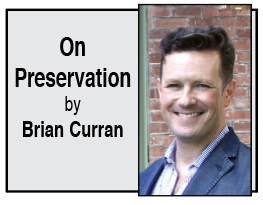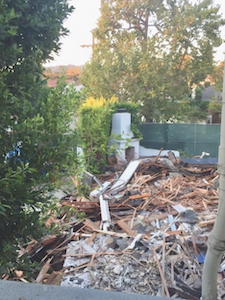On Preservation: Tragedy on Citrus tells of loss of ‘memory, continuity and identity’
 Few names in the recent memory of our neighborhood have fallen further into ignominy than that of Reuven Gradon, who through mendacious flattery and lies purchased the Tudor gem of a home formerly located at 361 N. Citrus Avenue and then promptly carried out its demolition. He also made the decision to forego the statutory niceties of posting notices for 30 days, informing his immediate neighbors or going before the Greater Wilshire Neighborhood Council Planning and Land Use Committee to explain.
Few names in the recent memory of our neighborhood have fallen further into ignominy than that of Reuven Gradon, who through mendacious flattery and lies purchased the Tudor gem of a home formerly located at 361 N. Citrus Avenue and then promptly carried out its demolition. He also made the decision to forego the statutory niceties of posting notices for 30 days, informing his immediate neighbors or going before the Greater Wilshire Neighborhood Council Planning and Land Use Committee to explain.
Such was his stealth that even Councilman Paul Koretz was puzzlingly unable to react quickly enough, leaving it to neighbors to try to physically intervene. Their efforts came to naught, and they were forced to watch helplessly as demolition crews, clearly briefed to expect resistance, carried out their mission with brutal and barbaric efficiency. Architectural and artistic elements, which could have been salvaged, were intentionally destroyed.
Several media outlets covered the story, including the “Larchmont Buzz,” which mournfully made the point that the loss was avoidable if preservation tools could have been applied prior to the sale. The house, recognized by SurveyLA, was eligible for local designation, the neighborhood could have created an Historic Preservation Overlay Zone (HPOZ), or conservation easements could have been arranged. But hindsight is no substitute or succor for vanished heritage.

STATUTORY NICETIES were ignored in the demolition of the Tudor gem of a home formerly at 361 N. Citrus Avenue.
So what is it that makes the destruction of 361 N. Citrus so gut-wrenching? Why all the fuss?
Thompson M. Mayes, vice president and senior counsel for the National Trust for Historic Preservation, in his book, “Why Old Places Matter,” states that “…old places are important for people to define who they are through memory, continuity, and identity…These fundamental reasons inform all of the other reasons that follow: commemoration, beauty, civic identity, and the reasons that are more pragmatic — preservation as a tool for community revitalization, the stabilization of property values, economic development and sustainability.”
Hancock Park and its adjacent neighborhoods are nothing if not defined by their nature and significance as historic neighborhoods, characterized by architecturally significant properties, the vast majority of which are protected through HPOZs. Preservation is a core value shared by the area’s large and diverse population from which it has benefited culturally and economically. The demolition of 361 N. Citrus is so jarring to the community because it threatened and violated this value — robbing the community of a piece of its “memory, continuity and identity.”
Reuven Gradon says that he will build something “that will draw on neighborhood character for the design.” This is simply impossible for someone who grew up in the neighborhood, but does not understand nor share its values. If he was serious, he might have used salvaged elements such as the Batchelder fireplace or the carved barge boards and leaded glass windows in his new home. Unfortunately, one only has to look at the northwest corner of Third and Orange to understand what he may mean by drawing on “neighborhood character.”
So the neighborhood is left with a dirty, empty and windswept lot, the perfect metaphor for Reuven Gradon’s understanding of community and of his credibility.
By Brian Curran
This month we welcome columnist Brian Curran, Windsor Square, a Hollywood Heritage board member and a lifelong preservationist, both here and across The Pond.
Category: Real Estate
